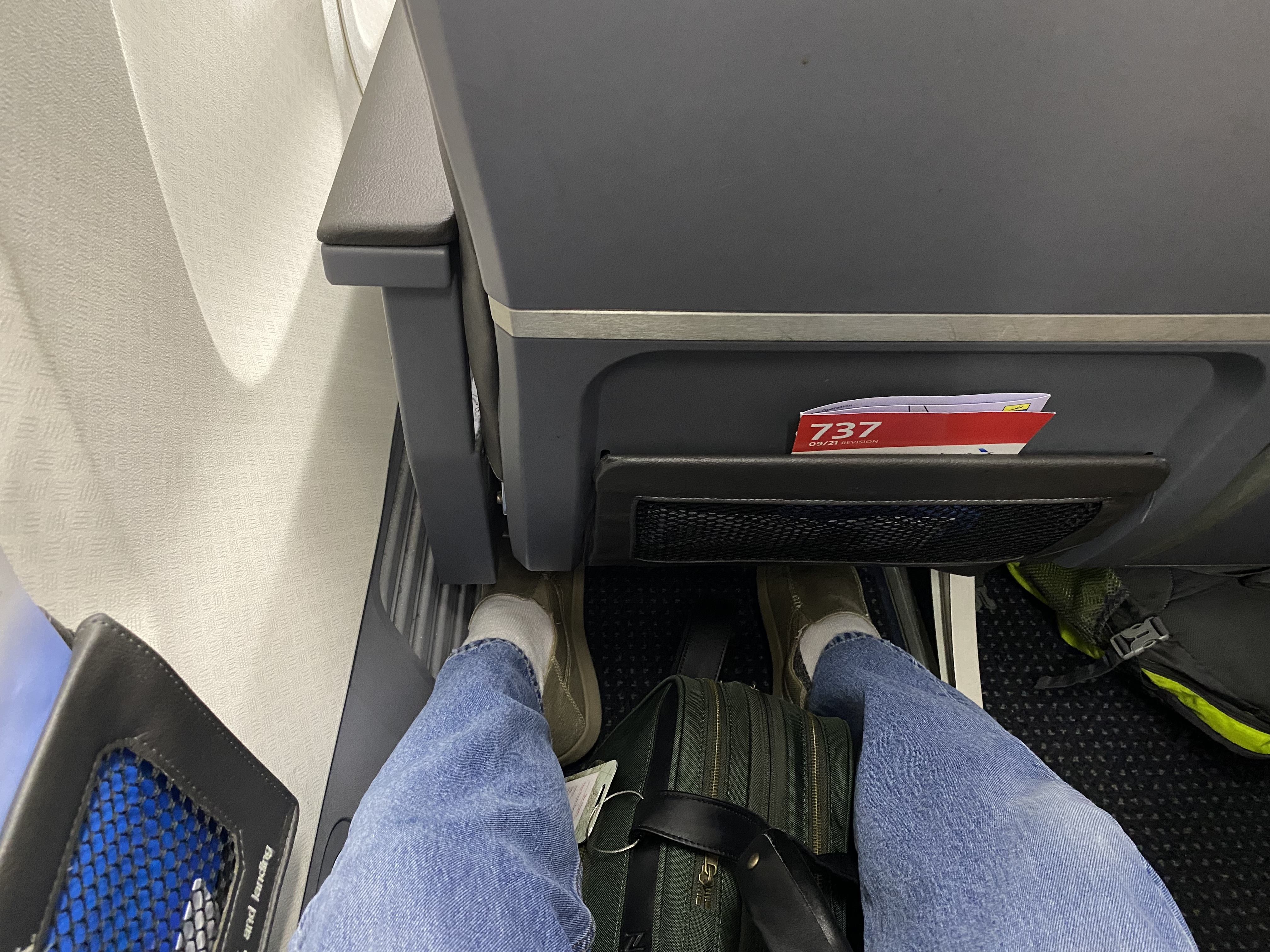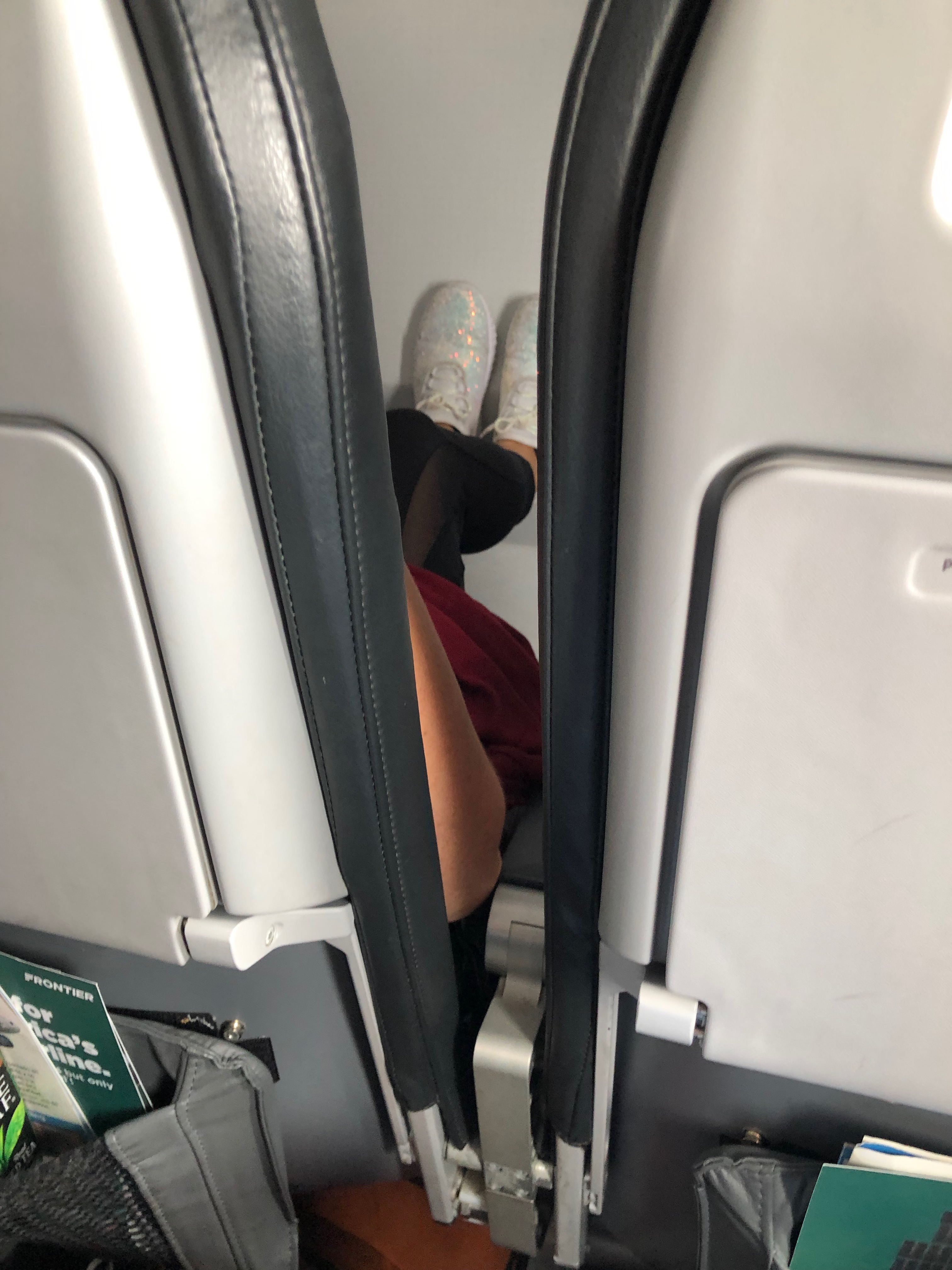Airlines know the seats people like best and therefore will pay the most for. Therefore, they separate the cabin into categories and charge fees according to the demand for each type of seat. The categories vary from something as simple as preferred seats, which aren’t different from other seats besides being closer to the front of the plane than the back. Some low-cost carriers like Spirit and Frontier charge extra for all aisle and window seats, knowing people will pay to avoid being in the dreaded middle seat.
The other section airlines charge more for is “extra” seats. These are seats the airlines install with extra legroom. Airlines have multiple reasons for having these seats. They’re the ones frequent flyers can choose when buying a ticket to ensure they’ll have a more comfortable flight. For the rest of the passengers who don’t want to be crammed in shoulder to shoulder, it’s a way to pay for a somewhat more civilized flying experience.
The “extra” section generally includes two other plane rows: the exit rows and the bulkhead row(s). I get the appeal of an exit row, but I can’t understand why people enjoy sitting in the bulkhead.
Why sit in the bulkhead?
Here’s my idea of a bulkhead seat. You’re sitting in a row with no tray table in the row in front of you. Because of that, the tray table is in the armrest, decreasing the width of your seat. If the plane has an entertainment system, your screen is mounted to the wall, but it’s further away than usual, yet no larger than the rest, making it less functional. If the screen is a touchscreen, it’s too far away.
You have no space to place your items under the seat in front of you, so you need to store them in the overhead with the rest of your carry-on bags. Since airlines often use the overhead space above the first 1-2 rows as a place for emergency equipment or the props for the onboard announcement (mock seat belt and life vest), you might have to store your items a few rows behind where you’re sitting.
While the bulkhead used to have a large amount of, or even unlimited legroom, that’s no longer the case on many planes. In fact, you’re barely able to stretch out your legs anymore. In a normal seat, it’s still possible to get a full extension if you know the proper body mechanics, breathing technique and yoga training.
It depends on the plane
Some aircraft have a bulkhead that isn’t a wall but a curtain. For instance, the American Airlines 737-800s with the Oasis interior does not have a wall. The three seats behind first class have legroom sliced up to provide space for each passenger. This means you can stretch your legs and keep your personal bag with you.

Since these planes don’t have an IFE system, there’s no need to worry about a screen. The main downside is that the tray table is in the armrest, making the seats narrower. There’s also no power source on the seat in front of you.
Why do people pay extra?
So, how can airlines get away with charging so much extra for these seats?
It’s perception versus reality. Honestly, if you check out a seat map on a plane, the bulkhead seats are rarely the ones that are booked first. The only people booking seats in the “extra” sections far in advance are frequent flyers who get to choose those seats for free. Look at what seats they pick. They go for the exit rows or the first rows of the preferred section, but the bulkhead seats are usually empty. They’ll remain available for purchase for between $25 to $75, depending on the length of the flight. You’re often able to purchase or upgrade to these seats up until the day of departure, and at that time the only people buying them are those forced to because those are the only seats available for purchase at the last minute.
However, I understand that some passengers prefer the additional legroom offered by a bulkhead. For taller individuals, having a wall instead of a seat in front of them means their knees won’t be cramped. Additionally, there’s no risk of the passenger in front reclining their seat. I guess that can be worth the inconvenience of having to put your bag in the overhead and a slightly narrower seat.
Besides taller passengers, it seems like the only other ones who prefer the bulkhead are the ones who like treat the plane like it’s their living room, such as this passenger on one of my flights.

Want to comment on this post? Great! Read this first to help ensure it gets approved.
Want to sponsor a post, write something for Your Mileage May Vary, or put ads on our site? Click here for more info.
Like this post? Please share it! We have plenty more just like it and would love it if you decided to hang around and sign up to get emailed notifications of when we post.
Whether you’ve read our articles before or this is the first time you’re stopping by, we’re really glad you’re here and hope you come back to visit again!
This post first appeared on Your Mileage May Vary

2 comments
Tell me your not a tall person without telling me your not tall
@Joe, I’m torn on this one, even as a not-tall person. My approach is to go for bulkheads on long-haul PY and Y but not on short-haul or narrowbodies. If the flight is empty, I’ll go with a non-bulkhead and try for an empty adjacent seat instead.
I LOVE not having anyone recline into you, plus the ease of aisle access if you’re in a middle or window. But you have to board early to secure overhead space since you can’t keep anything at your feet. Also, while some airlines/aircraft install the PTVs on the bulkhead, I’ve found that most put them in the armrests. So, it sucks not being able to have your bag near you or watch movies during the first 30 and last 45 minutes.
You can also get reassigned if another pax needs the seat – baby (bassinet location), disabled, service dog, etc.